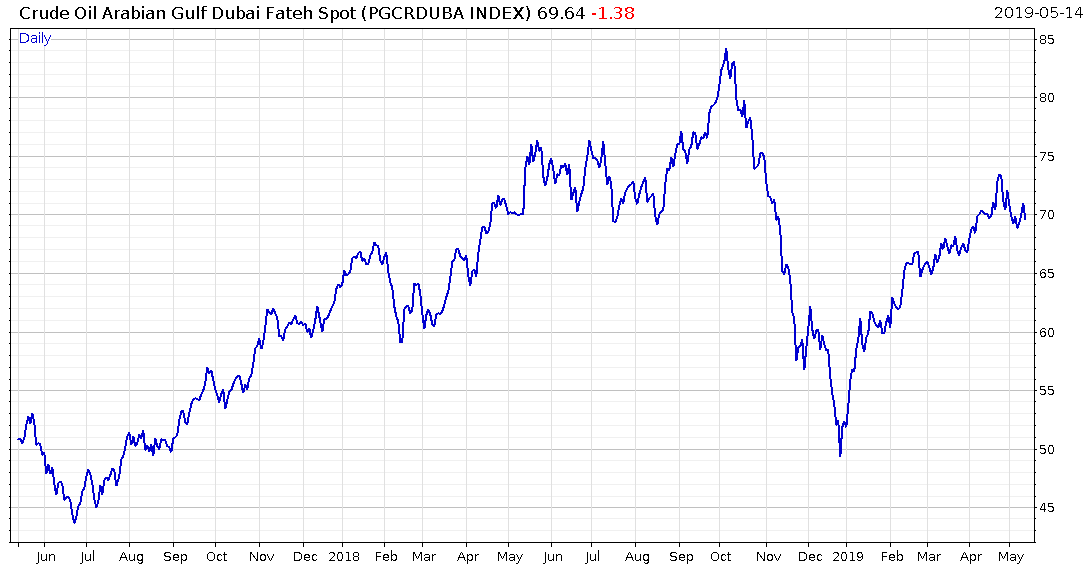Somebody is trying to turn off the world’s biggest oil tap.
The last few days have seen multiple attacks in the Arabian Peninsula, all directed toward hindering oil and gas operations.
It began on Sunday with the UAE declaring that four of its oil tankers had been sabotaged. The day after, Saudi Arabia declared two of theirs had been similarly damaged, as well as a Norwegian tanker.
And then yesterday, there were two drone attacks on Saudi Arabia’s East-West Pipeline. The improvised drones attacked two oil pumping stations, and the resulting fire led to the pipeline suspending operations.
That pipeline is over 700 miles long and bisects the country right through the middle. That the improvised drones, launched from Yemen, could travel so far into the heart of Saudi Arabia (roughly 500 miles away) makes the attack stand out, and is a testament to how disruptive drone technology is becoming. If Gatwick wasn’t your wake-up call, this should be.
You’ll be seeing a lot more stories about drones causing mayhem in the news as we venture further into this “new world disorder”. (Their destructive capacity was the focus of a recent Zero Hour Alert issue, where we examined the investment angles.)
I reckon we’ll see a drone on a country’s flag by the time Cold War II is over, but that’s another story. That Saudi pipeline can move 5 million barrels a day of crude oil across it. Attempts to shut it down will have big consequences for the energy market.
The top suspect in this oil whodunit is Iran, who provide financial and military support to the Houthis in Yemen. That East-West Pipeline is the primary means for Saudi Arabia to export oil without it travelling through the Strait of Hormuz, which the Iranians have threatened to shut down. The attack may have been an attempt by the Iranians to remove this alternative, and gain further economic leverage.
Or, it could be a false-flag attack by the US (or another actor, like Israel) as an excuse to move militarily against Iran. Whoever the perpetrator may be, this continuous assault on oil infrastructure is making me bullish on black gold.
Our energy specialist James Allen is already drafting up an update to his subscribers on the possible consequences of these attacks.
From his perspective, the US’s “energy independence” granted by their Texan oil, that has allowed US foreign policy to be so aggressive towards Iran is all built on a lie.
As he wrote recently:
… the so-called shale revolution has more than doubled US oil production over the last decade, slashing US net import dependence in the process. Last year US production exceeded its previous peak of just over 10 million barrels a day (b/d). As a result, US net imports of oil and petroleum products have dropped from more than 12 million b/d in 2004-07 to just 2.3 million b/d last year. The US’s own Energy Information Administration (EIA) expects that to disappear completely next year, as the country becomes a net oil exporter.
The explosion in fracking has led to robust claims about American energy wealth. Erik Norland, executive director of CME Group, a derivatives marketplace, calls fracking “one of the top five things reshaping geopolitics.” But is this big turnaround real? What if it’s itself based on a presumption that US shale oil output will continue indefinitely..?
The punchline is this: so-called energy independence or energy dominance is a myth. The US is still very much vulnerable to supply disruption and oil price shocks. What’s more, the whole edifice is about to crumble as the driving force behind the huge growth in US oil production is – left to its own devices – about to come to a grinding halt. For investors who understand what’s happening, it could be a fortune-making event…
Until next time,
Boaz Shoshan
Editor, Capital & Conflict
Category: Market updates



